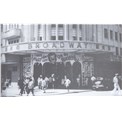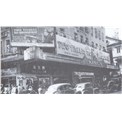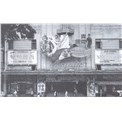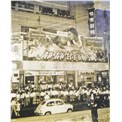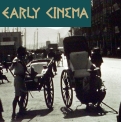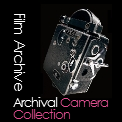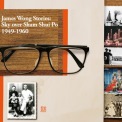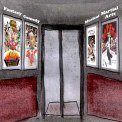 Collections
Collections Down Memory Lane: Movie Theatres of the Olden Days
Down Memory Lane: Movie Theatres of the Olden Days Congregation and Alliances of Cinema Circuits
Congregation and Alliances of Cinema Circuits Foreign Film Cinema Circuits
Foreign Film Cinema Circuits
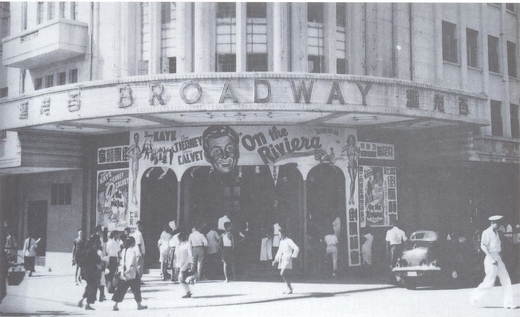
Motion pictures were introduced to the oriental fishing port of Hong Kong, a place where East meets West, in the early 20th century. Since then, many foreign language features have made their way to our shores, with American films being the frontrunner. Prior to World War II, cinemas which showed foreign movies included Queen’s Theatre, King’s Theatre, Majestic Theatre, Alhambra Theatre and Star Theatre. Each cinema screened a different film and rarely did they form circuits. The number of motion pictures from the West, as well as the number of moviegoers, increased steadily after the war, leading to the gradual formation of foreign film cinema circuits.
The Wonder of Foreign Film Cinema Circuits
From 1949 to 1954, cinemas such as Liberty Theatre, Roxy Theatre, Broadway Theatre, Princess Theatre and Hoover Theatre were established. These large movie theatres gradually developed into major foreign film cinema circuits with networks covering both Kowloon and Hong Kong. The major circuits which showed foreign films in the 1950s included “Queen’s/Alhambra”, “Roxy/Broadway”, “King’s/Princess” and “Hoover/Liberty”. Liberty Theatre later switched partners and teamed up with Gala Theatre to become the leading foreign film cinema circuit of the 1960s, showing the epic film, Ben-Hur (released in the US in 1959), in 1961. Princess Theatre and Lee Theatre also operated their own circuit during that time and had the privilege of screening the first ever James Bond film, Dr. No (released in the US in 1962) in 1963. After opening for business in 1960, Royal Theatre partnered up with Queen’s Theatre and Empire Theatre. The circuit showed of The Sound of Music (released in the US in 1965) in 1966 for 87 days, breaking box office records with revenues totaling approximately HK$2.4 million.
Foreign film cinema circuits which operated in the 1970s and 1980s included “Ocean/Park”, “Empress/New York”, “London/Lee” and “Rex/Pearl”. They would also team up for joint screenings whenever blockbusters hit the market.
Cathay Theatre Promotes Soviet Cinema
Cathay Theatre, which was located in Wanchai, predominantly showed films from left-wing organisations and Mainland China. On 25 May 1956, the cinema launched “Soviet Film Week”. In the times that followed, Soviet films continued to be distributed in Hong Kong. Examples include Cannes Film Festival Palme d'Or winner, Letyat Shuravli (aka The Cranes Are Flying, released in the Soviet Union in 1957), which was jointly shown by Astor Theatre and Metrople Theatre in September 1959, as well as Tikhiy Don (aka And Quiet Flows the Don, released in the Soviet Union in 1957) which Cathay Theatre and Liberty Theatre screened together in November of the same year.
A Japanese Film Cinema Circuit
During the 1950s and 1960s, Japanese films were often shown in cinemas. On 3 June 1964, New York Theatre and Great World Theatre joined forces to premiere Kakushi-toride No San-akunin (aka The Hidden Fortress, released in Japan in 1958). The circuit only lasted for half a year, but the two cinemas partnered up to screen Japanese features once again in mid-July 1965, this time for several years. Some of the more memorable movies shown were produced by Nikkatsu Corporation, such as the gangster films starring Kobayashi Akira.
The Quiet Workings of Art Cinema
In 1971, Mok Yuen Hei and his associates won the bid to operate formerly known World Theatre. It opened for business on 8 January under the same name of World Theatre and became Hong Kong’s first art cinema, showing mostly art films, such as Visconti’s Lo Straniero (aka The Stranger, released in Italy in 1967), Suna No Onna (aka Woman in the Dunes, released in Japan in 1964) and Hiroshima Mon Amour (released in Japan in 1959). The cinema shut down not long after and Mok Yuen Hei partnered up with Law Kar and others to take over Hong Kong Grand Theatre, which was about to be demolished. The full 3-hour version of Akira Kurosawa’s Akahige (aka Red Beard, released in Japan in 1965) was screened at the grand opening on 1 August 1975. It went on to show films such as 8½ (released in Italy in 1963) and Baisers Volés (aka Stolen Kisses, released in France in 1972). The cinema opened for one last day of business on 18 September 1976, with the aptly screening of The Last Picture Show (released in the US in 1971).
